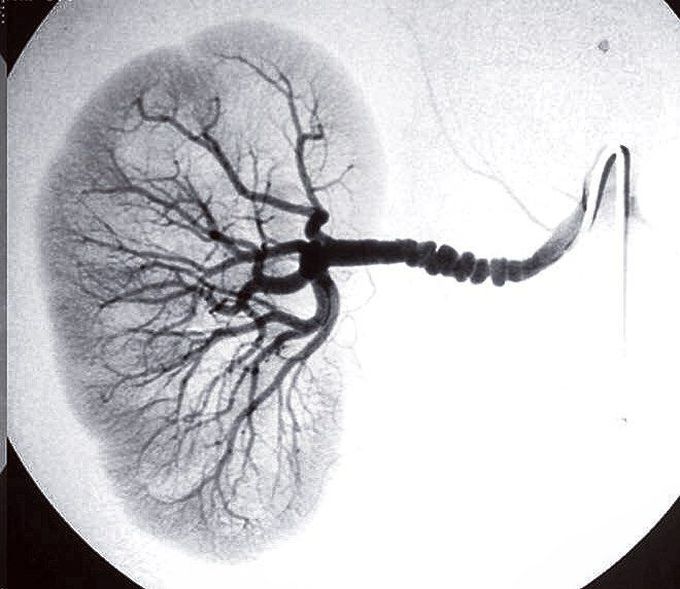


Fibromuscular dysplasia of the renal artery demonstrating the characteristic “string of beads” of the affected artery!
Let’s talk pathology. This is a rare blood vessel disease that presents no unique symptoms, which explains why doctors rarely look for it and often misdiagnose it.It is characterized as a non-atherosclerotic, non-inflammatory disease of the blood vessels that causes abnormal growth within the wall of an artery. The outcome is arterial stenoses. It most commonly causes small stenoses along a vessel with intervening areas of dilatation (small aneurysms), creating a “string of beads” appearance. Less commonly the stenosis has a smooth tapered appearance. All these changes eventually weakens the vessel wall which predisposes to dissection. Up to 60% of cases are involving the renal arteries, which is also presented in the image above. The disease is diagnosed by arterial imaging with CT or MR angiography, or digital subtraction angiography, which detects alternating stenoses and dilatations within the vessel lumen. Asymptomatic cases are only observed but the symptomatic cases usually require angioplasty.
Hemodynamic stimuli&nonhemodynamic stimuli

